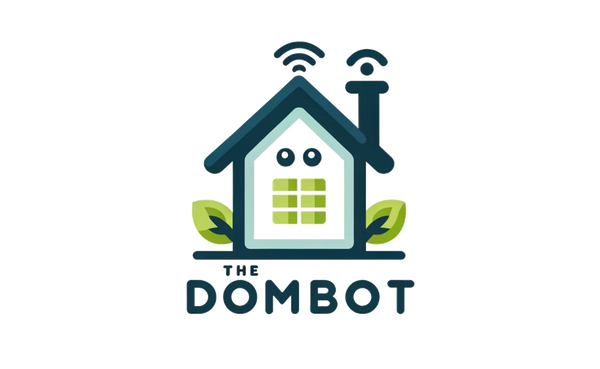Collection: Raspberry Pi Smart Home: Build Your Own With Home Assistant
Raspberry Pi: The Tiny Computer That Runs Your Home (And Makes You Laugh)
Hey there, tech-loving friends! Today, we're diving into the world of smart homes, and let me tell you, it's a world full of possibilities, automation, and, yes, even a little bit of laughter. We're talking about the Raspberry Pi, that little computer that's become the heart of many a smart home setup. And trust me, it's a lot more fun than you might think.
The Raspberry Pi: It's Not Just for Kids (But They Love It Too)
Now, you might be thinking, "Raspberry Pi? Isn't that for kids who want to learn coding?" Well, yes, it is! But it's also a powerful tool for anyone who wants to take control of their home tech. Think of it as the Swiss Army Knife of smart home devices. It can do everything from controlling your lights and thermostat to running your security system and even streaming your favorite shows.
And the best part? It's surprisingly affordable. You can get a Raspberry Pi 3 for under $50, which is a steal compared to some of the other smart home hubs out there.
Home Assistant: The Brains Behind the Operation
But the Raspberry Pi is just the hardware. To really make your smart home sing, you need software, and that's where Home Assistant comes in. It's an open-source home automation platform that's incredibly flexible and customizable. You can use it to create automations, control your devices, and even monitor your home's energy usage.
Think of Home Assistant as the conductor of your smart home orchestra. It brings all your devices together and lets you control them with ease.
Setting Up Your Home Assistant Raspberry Pi 3: A Step-by-Step Guide (With a Side of Humor)
Okay, so you're ready to dive into the world of Raspberry Pi and Home Assistant. But where do you start? Don't worry, I've got you covered. Here's a quick and easy guide, with a few jokes thrown in for good measure:
1. Gather Your Supplies:
- Raspberry Pi 3: The heart of your operation. Make sure you get the right one! (Don't worry, there's a Raspberry Pi for everyone, even if you're a beginner.)
- Micro SD Card: This is where you'll store your operating system and Home Assistant. Make sure it's big enough for all your smart home dreams. (Don't worry, you can always get a bigger one later. It's like buying a bigger house for your data.)
- Power Supply: You need to keep that Raspberry Pi running, so make sure you have a reliable power supply. (Don't worry, it doesn't need much power. It's like a tiny hamster running on a wheel, but way more efficient.)
- Ethernet Cable or Wi-Fi: You need to connect your Raspberry Pi to the internet. (Don't worry, it's not as complicated as it sounds. It's like teaching your pet to use the internet, but way easier.)
- Monitor, Keyboard, and Mouse: You'll need these to set up your Raspberry Pi initially. (Don't worry, you can ditch them later. It's like teaching your pet to use a computer, but way easier.)
2. Download the Home Assistant Image:
This is the software that will make your Raspberry Pi a smart home powerhouse. You can download the image from the Home Assistant website. (Don't worry, it's not as complicated as it sounds. It's like downloading a movie, but way more useful.)
3. Flash the Image to Your SD Card:
This is where you transfer the Home Assistant image to your SD card. You can use a tool like Etcher to do this. (Don't worry, it's not as complicated as it sounds. It's like copying a file, but way more important.)
4. Boot Up Your Raspberry Pi:
Insert the SD card into your Raspberry Pi and power it on. (Don't worry, it's not as complicated as it sounds. It's like turning on your computer, but way smaller.)
5. Access Home Assistant:
Once your Raspberry Pi is booted up, you can access Home Assistant through your web browser. (Don't worry, it's not as complicated as it sounds. It's like browsing the internet, but way more awesome.)
The Fun Part: Adding Devices and Creating Automations
Now that you have Home Assistant up and running, it's time for the fun part: adding devices and creating automations. You can connect all sorts of devices to Home Assistant, from smart lights and thermostats to security cameras and even your coffee maker. (Don't worry, it's not as complicated as it sounds. It's like adding friends to your social media, but way more useful.)
And once you have your devices connected, you can start creating automations. For example, you can set up your lights to turn on automatically when you walk in the door, or your thermostat to adjust based on the weather. (Don't worry, it's not as complicated as it sounds. It's like setting up a routine, but way more futuristic.)
The Raspberry Pi: A Smart Home Hero (With a Sense of Humor)
So there you have it, folks. The Raspberry Pi is a powerful and affordable way to build a smart home that's both functional and fun. And with Home Assistant, you can create a system that's as unique as you are. So go out there, get your Raspberry Pi, and start building your dream smart home! (Don't worry, it's not as complicated as it sounds. It's like building a house, but way smaller and way more fun.)
